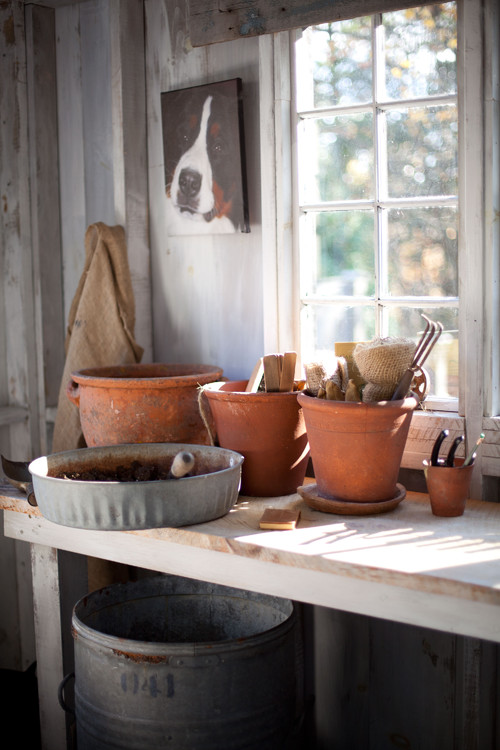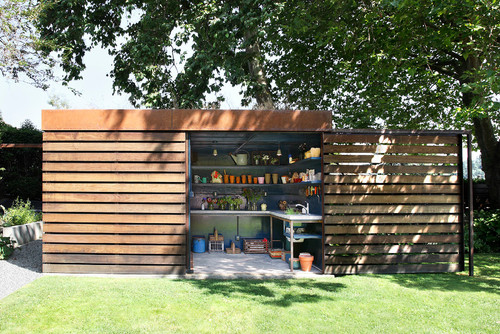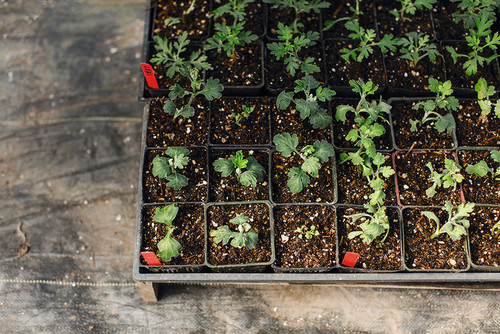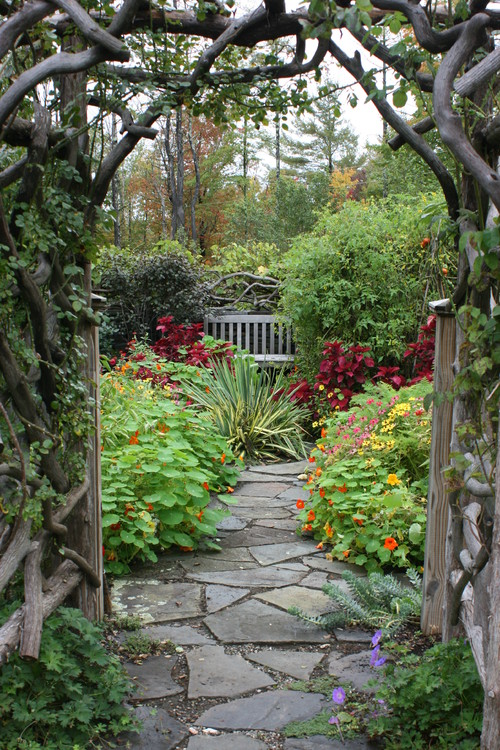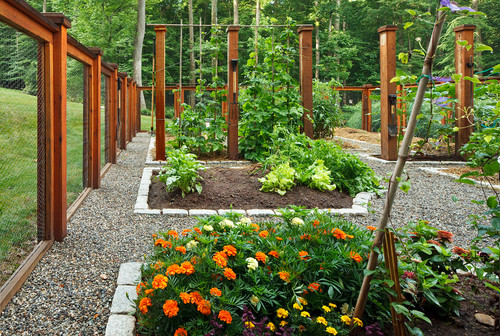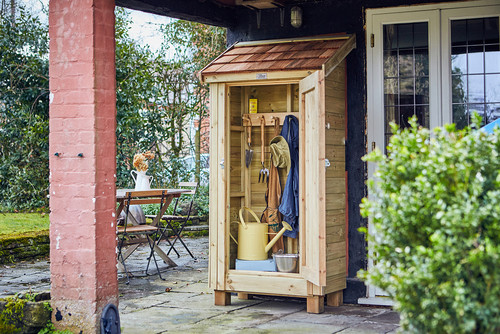Do These 7 Gardening Tasks Now To Ensure Your Spring Garden Will Thrive

Photo courtesy of Haver & Skolnick LLC Architects via Houzz
Gardening in the winter might seem like a futile task, especially if you live in an area that experiences frigid temperatures and consistently wet weather. But smart gardeners know that minding their garden is a year-round job, even if they’re not actively digging in the dirt.
Spring is right around the corner, and there’s no time like the present to start implementing your seasonal gardening strategy.
“The main reason to work on the garden in winter is to get ahead of the game. Anything you can do in winter is one less thing to worry about in spring,” says Erin Schanen, Troy-Bilt’s gardening partner, a master gardener volunteer, and creator of The Impatient Gardener blog and YouTube channel.
Here are a few items to add to your to-do list that’ll help you get a jump on your gardening once the weather warms up.
1. Clean and repair garden tools
Winter is the time to tend to your gardening tools by sharpening them, lubricating them, removing rust, and replacing broken handles or dull blades.
Use a wire brush or a blast of water to remove dirt, and then dry the tool with a rag. Remove any rust with a pumice stone that has been soaked in water or with fine steel wool.
“Sharpen shovels and spades with a metal file after applying a thin coat of oil. Hand pruners, loppers, and other smaller blades should be sharpened using a sharpening stone,” says Schanen.
Lubricate blades with a light oil like camellia oil after sharpening to help keep the blades rust-free.
Check for loose or broken parts on all your tools, and replace or repair them as needed.
“Wooden handles can be cleaned with soap and water and a stiff brush, then coated in linseed oil,” says Schanen.
2. Take inventory of gardening materials
Determine the amount of potting soil, mulch, fertilizer, and other materials in your shed. Repurchase any materials you’ll need for the coming year.
“It’s particularly important to go through your stock of fertilizer and any herbicides, pesticides, or other treatments if they have been stored in a space where they freeze,” says Schanen.
Temperature extremes can reduce the effectiveness of the materials in plant treatments.
3. Order seeds
Request and review seed catalogs to get inspiration for your garden, and always make sure to order seeds that are suitable for your growing conditions.
“For this time of year, I recommend ordering seeds for lettuce, spinach, peas, radishes, broccoli, cauliflower, cabbage, bok choy, and some herbs like sage, oregano, dill, and mint. They’ll be perfect to plant in the coming months and will garner results by late spring or early summer,” says Brett Douglas, Thumbtack pro and owner of Ironclad Landscape Management.
To see if old seeds are still good, do a germination test. Put a few seeds on a moist paper towel, place it in plastic wrap or a sealable plastic bag, and make sure it stays warm. Wait about a week to see how many seeds germinate.
4. Schedule time to start seeds
Make a schedule of when your seeds need to be started and what supplies are needed.
“A seed-starting spreadsheet can be very helpful to make sure you are starting seeds at the appropriate time, which is important to make sure plants have the opportunity to continue growing and, if you’re starting them inside under grow lights, are planted at the right time,” says Schanen.
Use the information on the seed packets to determine when to start the seeds. It’s often based on your last frost date. (This can be found by doing an online search for the last frost date by ZIP code.)
5. Get to know your soil
A soil test will help gardeners understand the chemistry of their soil, including the pH level, amount of organic matter, and levels of certain important nutrients. Most public universities provide soil tests for a nominal fee.
“The report you’ll receive is not just an important window into what’s happening in your soil, but it will also provide information on how to correct imbalances for the best results for what you’re growing,” says Schanen.
Since soil needs are specific to what is being growing in a given area, Schanen says it’s best to take samples for the lawn, vegetables, and perennial gardens separately.
Gardeners in cooler climate areas can do a soil test when frost is no longer on the ground.
6. Choose the right tools
Understanding the difference between a cultivator and tiller will help you select the right piece of equipment for your gardening needs.
“Cultivators are great for mixing loose soil and breaking up small weeds between rows in gardens that have already been established,” says Schanen. “Tillers are excellent for creating a new garden and mixing in soil amendments to establish a good foundation for growing.
With gardening tools, Douglas advises to “always go for quality over price.”
7. Prepare to remove winter mulch
When the first signs of winter weather hit, gardeners who live in frosty climates know to apply a layer of mulch to insulate their plants and protect them from rapid freezing and thawing. But when nighttime temperatures are no longer at or below freezing, and your plants start to show new growth, it’s time to remove the mulch.
Now is the perfect time to closely observe your plants, check the ground beneath the mulch, and monitor temperatures so as to determine the right time to remove your winter mulch. Experts recommend keeping a garden journal to record your findings.
The post Do These 7 Gardening Tasks Now To Ensure Your Spring Garden Will Thrive appeared first on Real Estate News & Insights | realtor.com®.

